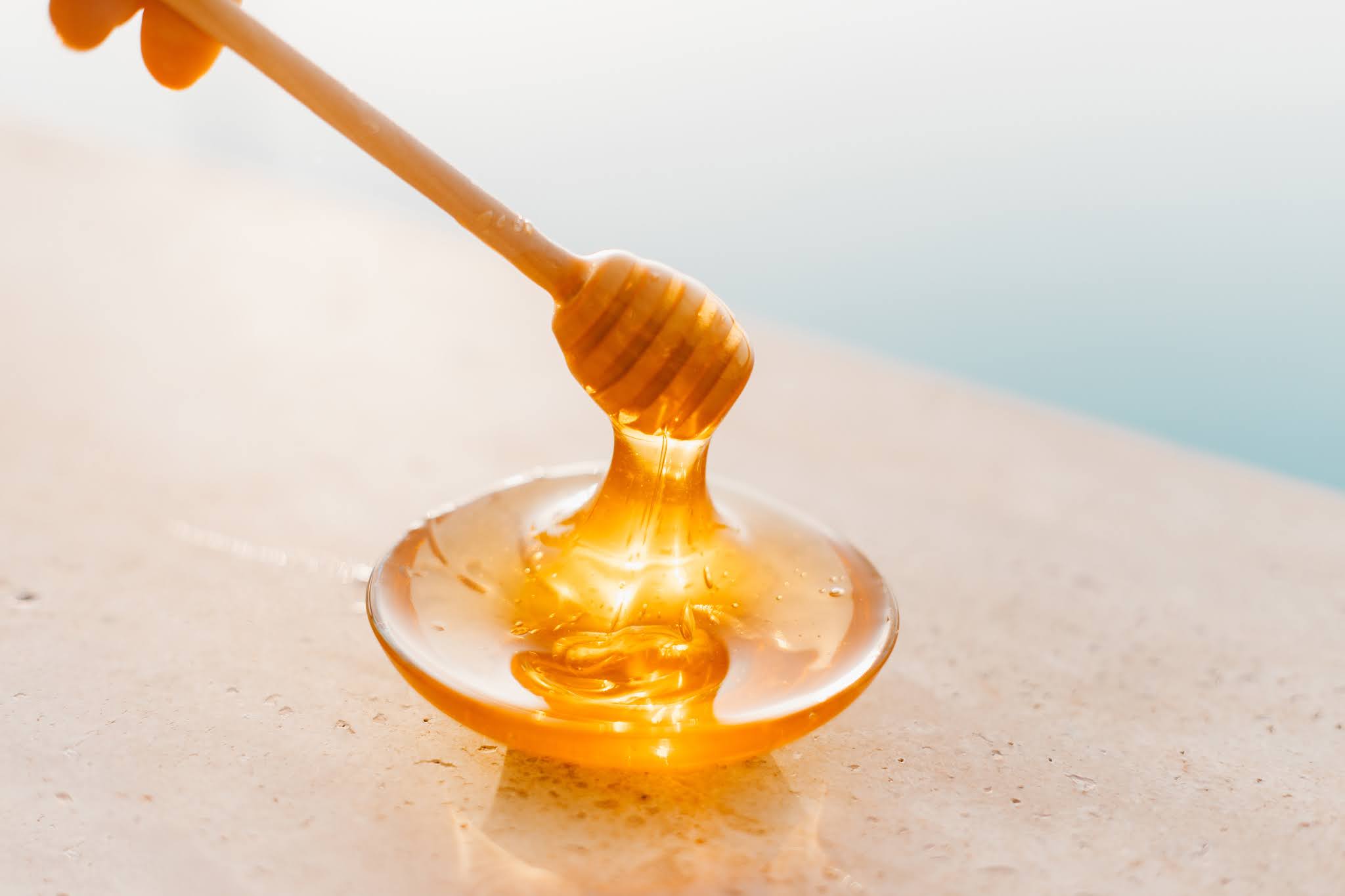Honey, a natural sweetener has been winning the hearts of people for centuries.
Facts about Honey.
Honey can be utilized by the body without placing much of a burden on an enfeebled digestive tract and is also recognized as valuable food for babies and young children.”
All should know that it possesses one great superiority —ease of digestion. The nectar of flowers is almost wholly caned sugar.
It will readily be seen that honey is a very desirable food for those with weakened digestive powers. If a person is very tired, “too exhausted to eat,” it is astonishing how a few tastes of honey will act almost like magic.
Almost no effort is required to make it ready for absorption. Persons suffering from some form of kidney trouble will find that honey is much more beneficial food for them than is cane sugar.
In eating comb honey many strive to eject every particle of wax, fearing that as the wax is indigestible, nightmares and other troublesome consequences will follow an indulgence in warm biscuit and honey.
The unpleasant symptoms from which some suffer after eating honey may often be removed by drinking a little milk.
As medicine honey has great value and many uses. It is excellent in most lung and throat affections and is often used with great bone fit in place of cod liver oil.
Children, who have more natural appetites, generally prefer it to butter. Honey is a laxative and sedative, and in diseases of the bladder and kidneys, it is an excellent remedy.
In preserving fruit, the formic acid it contains makes a better preservative than sugar syrup, and it is also used in cooking and confectionery.
Composition of Honey.
Honey is chiefly a concentrated solution of various sugars in water. In addition, there are small amounts of protein, mineral matter, traces of acid, and minute quantities of volatile substances which give the honey its characteristic aroma and flavor.
The sugars present in honey are sucrose (cane sugar) and invert sugar —a name applied to a mixture of dextrose (grape sugar) and levulose (fruit sugar). The amount of cane sugar is quite small.
On average, less than one-fifth of the weight of honey is water. But the proportion of water varies in individual kinds of honey; it is influenced by the climatic conditions at the time the honey is produced and also by the amount of moisture in the atmosphere in which the honey is stored.
Value of Honey as a Food.
Since honey is chiefly sugar, it belongs in the class of fuel or energy-producing foods
. The protein and the mineral matter which it contains occur in quantities too small to be of great importance in the ordinary mixed diet, yet, they are not to be wholly disregarded.
Honey is reported to contain very small quantities of vitamin B and one investigator has reported finding a trace of vitamin A in comb-honey.
Again, these occur in quantities too small to be of great significance in the average mixed diet. On the whole, honey is wholesome, naturally sweet, and is to be highly recommended as such.
Care of Honey.
Honey, in common with other highly concentrated sugar solutions, has the quality of keeping well for long periods of time; that is, with proper care, it does not readily mold, ferment or otherwise “spoil”.
Honey has, however, the property of readily absorbing moisture; hence, if exposed to a damp atmosphere, it may in time absorb sufficient moisture to dilute it to a degree where fermentation does more readily occur.
As has been pointed out, honey is more likely to become granulated if kept at a low temperature.
For this reason, it is best to keep it in a warm place—that is, at a fairly constant temperature of about 70° F or above; never in the refrigerator.
A safe rule, therefore, for caring for honey is to keep it in a tightly closed container in a warm, dry place.
DIFFERENT FLAVORS OF HONEY.
Nearly all flowers secrete nectar, though some kinds yield more than others. Very few people feel that the difference in flavor and color of different kinds of honey is due to the nectar being gathered from different kinds of flowers.
For instance, honey gathered from white clover blossoms or from alfalfa blossoms is very light in color and mild in flavor. On the other hand, honey from buckwheat blossoms is very dark-colored and strong in taste.
Honey from goldenrod or Spanish needle is of a bright amber or golden color, much prized by some consumers.
Some of the other substances present in minute quantity, namely volatile oils, or other bodies of pronounced odor or flavor from the nectar, are valuable because they influence the flavor and aroma of the honey.




No comments:
Post a Comment